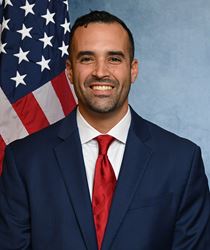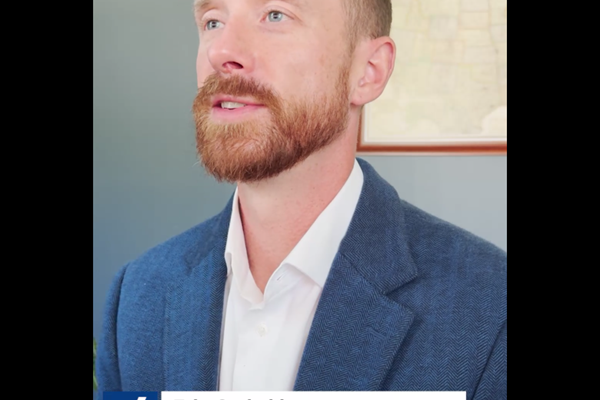The Digital Witness: Preserving Integrity in the Age of AI-Driven Insurance Fraud
In today's claims environment, a picture or video is no longer worth a thousand words; it is potentially worth a multi-million dollar payout. From dashcam footage in a commercial vehicle collision to smartphone images of a fire-damaged factory, digital media has become the central pillar of evidence in large and specialized insurance claims.
This reliance, however, has introduced a sophisticated and growing threat that can no longer be ignored.
The Rising Threat of Manipulation
The ease of digital manipulation, supercharged by the recent explosion of generative artificial intelligence, presents a profound challenge to the integrity of the claims process.
The problem is no longer just about a claimant slightly editing a photo; it's about the potential for completely fabricated, photorealistic evidence being used to substantiate fraudulent claims, costing insurers billions annually.
Core Issues in Digital Evidence
The core issue is twofold.
First, the casual handling of digital evidence corrupts it from the moment of collection. When an adjuster receives a video file via email or a download link, crucial information is immediately lost or altered. The file's metadata, which contains a treasure trove of information about the file's origin, creation date, and modification history, can be wiped clean. Without a documented and unbroken chain of custody, the evidence becomes vulnerable to challenges regarding its authenticity.
Second, the threat of generative AI has moved from theoretical to practical. Malicious actors can now generate highly convincing images and videos depicting events that never occurred, damage that doesn't exist, or scenarios tailored to exploit policy coverage. To the untrained eye, this fabricated evidence is indistinguishable from reality, making traditional review methods dangerously obsolete.
A Forensic Approach to Digital Media
The solution to this modern problem is not to distrust all digital media, but to adopt a disciplined, scientific approach through digital forensics. This process moves beyond simply viewing the evidence and instead focuses on its preservation, validation, and analysis in a manner that is both legally defensible and scientifically sound.
The first and most critical step is forensic collection. Instead of a simple file transfer, a forensic expert creates a perfect, bit-for-bit copy of the source media, whether it is a security DVR, a smartphone, or a camera's memory card. This process is done using specialized hardware that prevents any alteration to the original device.
A unique cryptographic hash, such as an $SHA-256$ value, is generated for both the original file and the forensic copy. If these complex alphanumeric signatures match, it provides mathematical certainty that the copy is an exact, unaltered replica of the original, preserving its integrity for future analysis and legal proceedings.
Advanced Forensic Analysis
Once the evidence is preserved, a multi-layered forensic analysis begins. This is far more than just watching a video on a loop. Experts examine the file's underlying structure and metadata to identify the device used, timestamp inconsistencies, and evidence of editing software.
Advanced techniques like Error Level Analysis (ELA) can reveal parts of an image that have been manipulated by detecting variations in compression levels, even when those changes are invisible to the naked eye.
To combat the threat of generative AI, forensic analysts now employ specialized tools and methodologies designed to detect digital forgeries. These tools analyze pixels for subtle artifacts, unnatural patterns in lighting and shadows, and other tell-tale signs left behind by AI algorithms.
This deep analysis can uncover evidence of manipulation that would otherwise go unnoticed, providing the critical data needed to differentiate between an authentic record of an event and a sophisticated digital fabrication.
Case Example: Warehouse Roof Collapse
Consider the case of a catastrophic roof collapse at a large commercial warehouse, resulting in a massive structural and inventory loss. The insured provides security camera footage, but a simple viewing is inconclusive.
By deploying a digital forensics expert, the investigation changes course. The expert forensically acquires the video from the DVR before it can be overwritten, preserving every frame of data. They then synchronize footage from four different cameras and conduct a granular, frame-by-frame analysis.
At normal speed, the collapse is a chaotic blur. But slowed down and enhanced, the forensic analysis pinpoints the precise origin of the failure: a single steel truss that begins to buckle just milliseconds before the rest of the structure gives way.
This objective, verifiable evidence shifts the focus of the investigation, allowing engineers to examine the specific point of failure and uncovering potential subrogation opportunities against the truss manufacturer or a contractor who had recently performed work in that area.
Why Forensic Practices Matter
The importance of integrating these forensic practices into the claims process cannot be overstated. By ensuring evidence is collected and preserved correctly, an insurer builds a foundation of unassailable truth.
A forensically sound video or image, with its chain of custody documented and its integrity verified by a hash value, is exceedingly difficult to challenge in subrogation, litigation, or any dispute. This process directly translates into accurate and fair claim settlements, ensuring the company pays what is legitimately owed while confidently denying fraudulent claims based on verifiable facts.
Most critically, this approach serves as a powerful defense against the rising tide of sophisticated fraud. Proactively identifying a single large-loss claim built on AI-generated evidence can prevent a multi-million dollar loss, delivering a return on investment that far exceeds the cost of the forensic investigation itself.
It establishes a robust line of defense that protects the company's assets and reinforces its reputation for diligence and fairness.
Becoming Guardians of Evidence
In conclusion, the modern claims landscape is fraught with digital risks, from simple data mishandling to complex AI-driven fraud schemes. The traditional methods of reviewing evidence are no longer sufficient.
The solution lies in a structured digital forensics workflow that prioritizes the preservation and meticulous analysis of video and image evidence. As an insurance professional, you are the first responder at the "digital scene."
Understanding when to pause the traditional process and engage a forensics expert to preserve the evidence is a critical skill. By applying this knowledge, you transition from being a passive viewer of evidence to an active guardian of its integrity, empowering your organization to navigate the complexities of the digital age with confidence and precision.
Our experts are ready to help.




